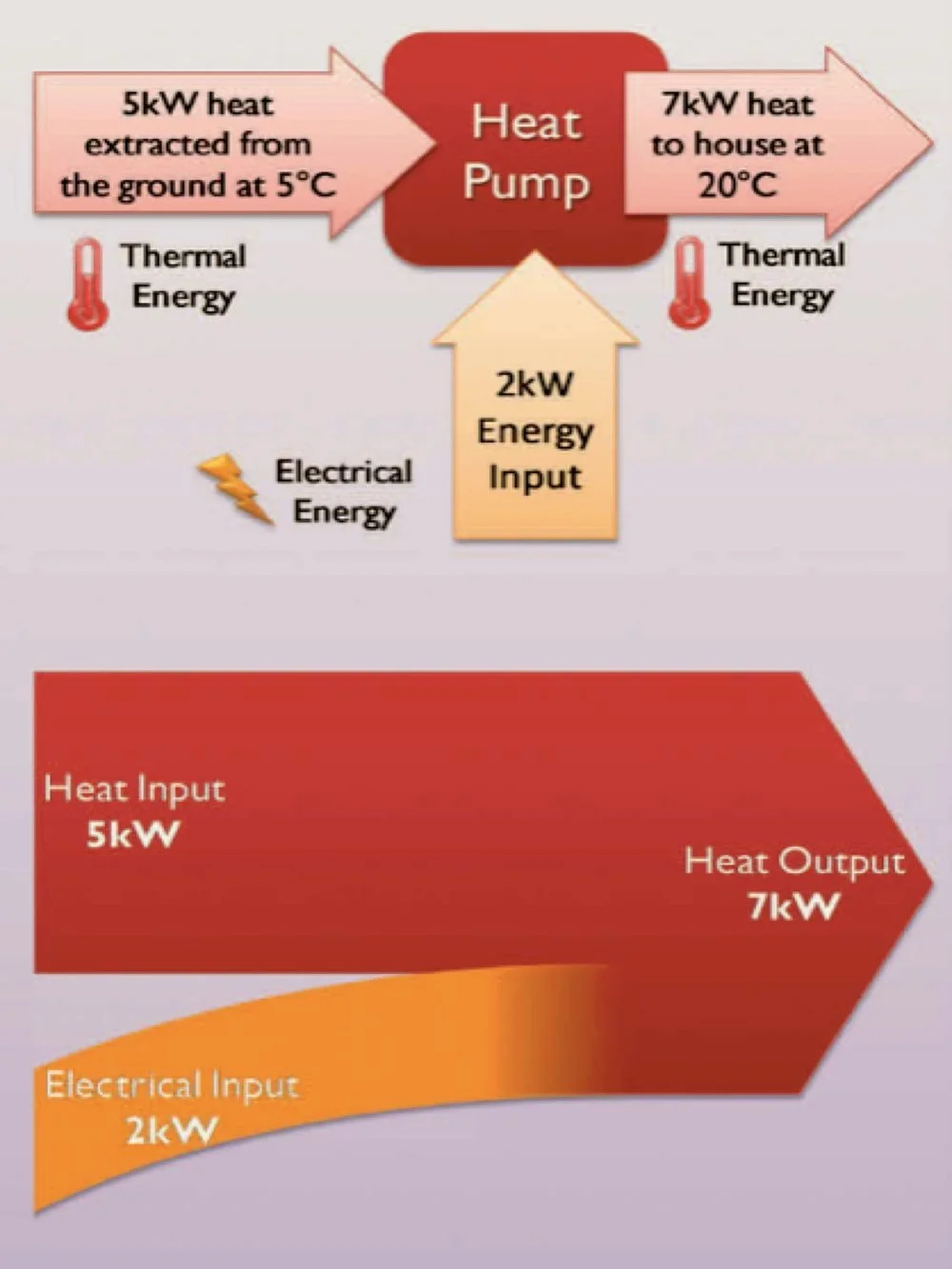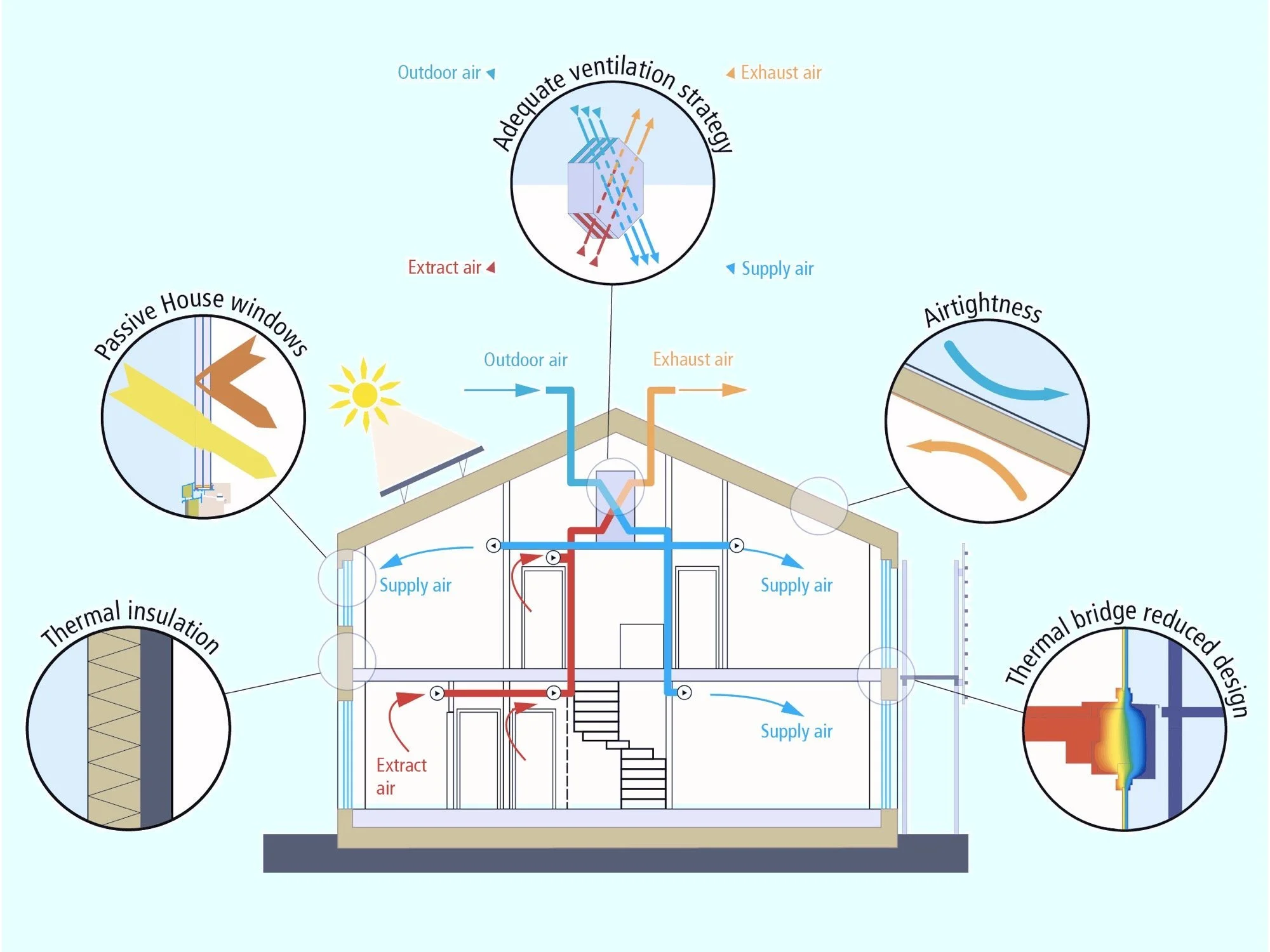Energy costs - what impact this has on the environment
In the UK, nearly half of adults are currently using less fuel in their homes because of the increased costs of living. Here, we look at some of the impacts of rising energy use on the environment and some ways to reduce domestic energy consumption, learning from the Passivhaus standard to make homes more energy efficient. Find out more about the ‘Passivhaus difference’ at Woodlands Malvern B&B.
Few can doubt that the earth’s climate is changing and we are experiencing greater extremes in our weather as a consequence. There are also strong arguments that the benefits of spending money to address this far outweigh the consequences of not doing so. There is no single solution to this: we need to do a number of things. And because of the inevitable lag between our doing things and changes happening we need to take significant actions now.
We know, for example, that restrictions on travel and other activities during the Covid-19 pandemic caused a temporary reduction in global greenhouse gas emissions and local air pollution. No one is suggesting a repeat of this is the way to deal with the climate impacts of our generation and use of energy. But we have to do things now: current global greenhouse gas emissions are at a record high and currently show no sign of slowing.
We need to reduce our energy usage
We need to reduce our overall energy consumption unless and until we can achieve ‘net zero’. Doing this will also reduce the wider impacts of energy production on the environment. This won’t be easy. The way we use energy in our homes is very different to when the majority of current UK housing stock was built, for example, in the 1970s and before, most homes were cold and people just wore more clothing; now most have central heating and fridges, freezers and washing machines — all of which lead to much more energy consumption.
Whilst we have hitherto compensated for poorly insulated and draughty homes by turning up the heating, increasing winter heating costs, and an increasing need for summer cooling, and the effects these have environmentally, mean that we must implement ways of reducing energy usage whilst maintaining indoor comfort.
Eggborough coal-fired power station in North Yorkshire. Photograph: Murdo Macleod. See: The Guardian
We also need to decarbonise our energy sources to reduce global heating
Generating electricity and heat by burning coal, oil, or gas is responsible for much of the greenhouse gas effect causing global heating.
This also substantially contributes to air pollution, water pollution and the problems of waste disposal.
However, the current period of high fossil fuel prices is changing the economic argument for low-carbon energy and has the potential to accelerate decarbonisation. For example, domestic roof-top solar panel installations in the UK doubled in 2022 compared with 2021 despite reduced government
subsidies.
Heat pumps are very efficient (300-400%, typically) because they take heat from the sun (in the ground, the air or in water, for example) and ‘magnify’ this and transport (‘pump’) it into a building to heat space or domestic hot water. Diagram from: Heat Pumps for the Home.
The much wider use of heat pumps is also recognised as a further way to decarbonising our energy needs because, other than requiring some electricity (the generation of which is becoming increasingly renewable) they take heat from the sun — via the ground, air or water — and transfer (‘pump’) it into buildings. They are also much more efficient than other forms of heating, usually in the order of 300-400%.
However, despite these strong arguments for their environmental friendliness, they are currently relatively expensive to install, although there are ways to address this.
Additionally, the costs of solar electricity generation, battery power and battery storage have dropped faster than anticipated and is likely to create a faster shift to low-carbon electricity-based water and space heating in homes.
Indeed, research published last year suggests that “most energy-economy models have historically underestimated deployment rates for renewable energy technologies and overestimated their costs” and that “…a rapid green energy transition will likely result in overall net savings of many trillions of dollars — even without accounting for climate damages or co-benefits of climate policy” suggesting that the sooner we transfer to renewable energy sources the cheaper it will become, as well as being better for the planet.
You can read more about our own ground source heat pump system in this blog and our running costs in this one.
The Climate Change Committee (the UK’s independent adviser on tackling climate change) has identified five ways to improve the quality of UK homes to reduce greenhouse gas emissions and safeguard comfort, health and wellbeing as the climate changes of which two are building new homes to a much higher standard of energy efficiency and retrofitting existing ones so that they are low-carbon and resilient to the changing climate.
And, interestingly, a recent report from Citizens Advice estimates that a major retrofitting programme to get all homes achieving an Energy Performance Certificate C rating would cut consumers’ bills by £24bn, save the NHS £2bn, cut new cases of childhood asthma, and create major economic and social benefits as well as help us achieve statutory net zero targets.
The principles of Passivhaus. See: The Passive House Institute
What can we learn from the Passivhaus way of building?
A new home built to the ‘gold standard’ Passivhaus principles will need less than 30% of the energy for space heating than an equivalent one built to current Building Regulations standard and up to 90% less energy compared to typical older building stock.
There is insufficient time to deal with the climate emergency we face by simply constructing all new buildings to the Passivhaus standard, but we can use some of its principals to retrofit existing ones - mainly our homes - to substantially improve energy efficiency.
The five key components of the Passivhaus approach are depicted in the diagram on the right. (Read more about this in our blog on how to make your house more passive.)
Of these, the three most important aspects of the Passivhaus principles applicable o retrofitting current homes to improve energy efficiency are:
substantially improving insulation;
significantly improving draught-proofing; and
to avoid potential condensation problems, fitting a mechanical ventilation heat recovery system.
Having addressed these points, converting double glazing to triple glazing will improve matters still further but may not make economical sense at the moment. However, having improved insulation and draught proofing, also changing to low-carbon heating for both domestic hot water and space heating will improve energy efficiency still further and reduce the impact on the environment.
Experience the Passivhaus difference
You can experience the Passivhaus difference at Woodlands Malvern B&B where we’ll be pleased to talk with you about our experiences of self-building and living in a passive house, and where you can also enjoy a relaxing break in the stunning surroundings of the Malvern Hills Area of Outstanding Natural Beauty.



